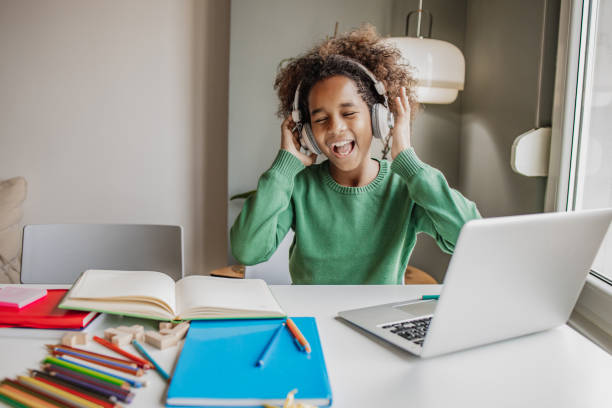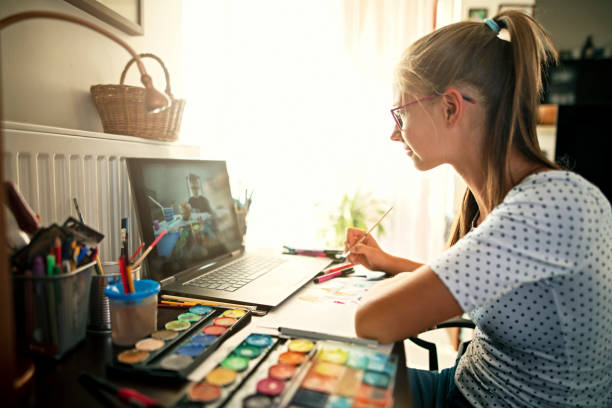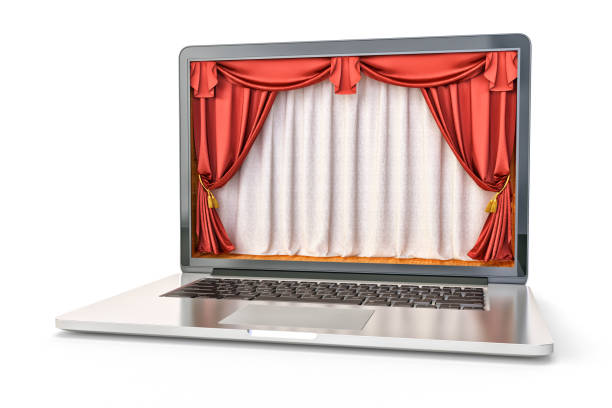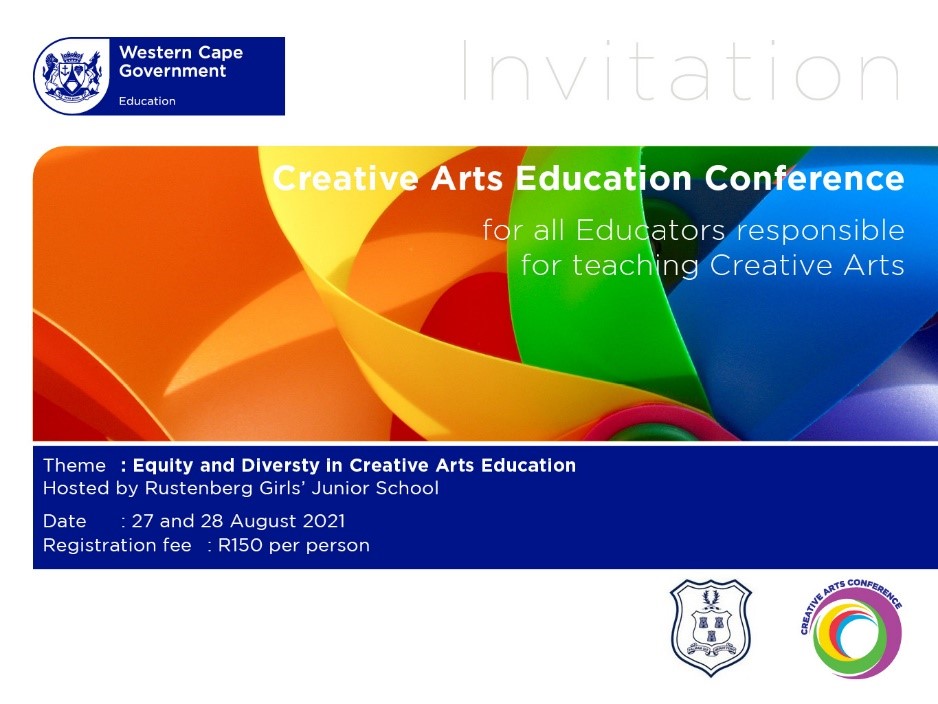

"We know what we are but know not what we may be." (Hamlet. William Shakespeare)
During a time of crisis, we are confronted with opportunities to either advance or stay where we are. As Rahm Emanuel stated, "Never let a serious crisis go to waste”, it may be an opportunity to do things you imagined you could not do before.
As the Creative Arts Subject Advisory team, we needed to find ways to dramatically change our approach to communicate with our teachers and to provide support by adapting to the distinctive rise of eLearning. In what seemed to be an insurmountable challenge we had to find answers to questions such as:
How to ensure essential practical arts skills are developed in a step-by-step manner to incrementally build proficiency in Dance, Drama, Music, and Visual Art?
How to uphold and ignite the creative and imaginative learning space as in teaching in a face-to-face mode?
How to create a safe space where learners feel challenged within an environment that holds low threat?
Answers, that enabled the team to do things they never thought they could do before, had to be found swiftly. Indeed, to answer Hamlet: to realise what we may be, by embracing the possibilities of the new and uncharted world of eLearning.
During the starting process of writing lessons, we had to rethink the classroom space and the learner’s environment at home, as the country was in full lockdown at the time. We needed to ignite the process of exploring different types of apps and e-tools. We wanted to delve into online resources that did not replace the good, ‘ole fashioned’ resources that we were used to but rather enhanced and embellished the Arts experience; taking it to another level!

We had to engage learners by stimulating their creativity and practical abilities, whilst they were learning in very difficult and challenging circumstances.
Initially, a mobile phone was the first go-to tool. Using basic installed video and audio recording apps on our mobiles to record and demonstrate practical skills. We wanted teachers to see how easy it is to DIY their own teaching and demonstration skills, by using the one gadget they all have at home. This also showed teachers and learners a different way of approaching assessments, in that learners could record their practical performances at home and send their work to their teacher via WhatsApp or upload it to a Google Drive and/or Google Classroom.
Once the technology bug bit, it was time to take it a step further. Being a team of life-long learners; the intrinsic motivation to know more, do more and strive to do it better the second time round, quickly led us to explore different editing apps via the Google Play- and Windows App Store. A variety of free and paying apps such as Video Editor Pro, Inshot, Movie Creator and Spotify quickly paved the way to making recorded videos visually stimulating. We no longer only needed to use general and globally targeted YouTube video resources, as we could now add music, modern backgrounds and edit our own digital resources in such a way that they are concise, short and have a focused impact that speaks directly to our South African classroom audience.
Padlet was used to create a wall of video clips, images and information on a certain theme or topic in a lesson plan. As Padlet is also collaborative, it allows teachers, learners and even parents to be involved. Different warm-up activities for the voice, body percussion activities, breathing exercises and rhythmical patterns could be combined into one wall to make it easier for teachers to have it at hand when needed. New activities can also be added along the way. A combination of songs and information on topics like Musical Theatre, The Peer Gynt Suite and instruments of the orchestra were easy to collect and share with Padlet. See https://bit.ly/3pAofGA as an example.
We embarked on using Book Creator that is useful when you want to combine text, images, audio and video to create, read and publish. We used it to explore different themes such as Mozart’s Requiem that is used in a film; played by a full orchestra with soloists, choir, conductor; discussing Mozart as a composer, his country of origin on a map with interesting facts about the country; integration of the music lesson in other subjects. The book concluded with a formal assessment with a rubric. See as an example: https://bit.ly/2SgDfgj
It is very important to be able to write music notes on staves in a neat and professional way, because very often it is necessary to create new material for the teachers and learners to serve as examples on how to write music. Crescendo Music Notation is perfect for composing original songs, music, scores, and soundtracks. The program features a wide variety of text, key signatures, time signatures, and notation symbols all on a free-form layout to give you complete control over your music creation. With Crescendo you can compose music for film, a band, a score, or just for fun! See examples in this lesson: https://bit.ly/3fWnUul

Next was the layout of the written page, which also needed to speak to our TikTok-driven generation. Resources and images from apps such as Pinterest and Free Google Images made the pages come to life. However, inserting images alongside the basic Word functions such as Shapes and SmartArt was just not cutting edge. This is when we started to explore the amazing features of Canva. It brought a new perspective to designing content on a page. This meant that a child could now visualise themselves in different spaces, such as a theatre, dance studio, or even somewhere across the globe in an art museum, whilst they are learning new practical skills. We literally brought the outside and imaginary world of the Arts onto the page and into the child’s home.
Once learners returned to the rotational school timetables after the lockdown, the next step in writing the lessons was to focus on creating content for learners in a more exciting and vibrant medium than just relying on the teacher as the instructor. Doodly, a whiteboard animation software app that makes use of a drag and drop interface with its unique features of a music-, characters- and props library as well as different handwriting tools, allowed us to create storyboards of instruction and content delivery in less than 4 minutes. The cartoonish interaction created an environment of fun and excitement and allowed the teacher more time in the classroom to facilitate, demonstrate and be part of the learner’s learning process. Dance Doodly video: https://bit.ly/33Kyy0w and the Drama Doodly video: https://bit.ly/2Q2m551

To ensure the longevity of these lessons and to enable teachers to engage with the newly developed digital resources, we also had to be innovative in our strategy to present online workshops via MS TEAMS using a creative and interactive presentation mode. In the various Art Form presentations, we used software like Doodly, PowerPoint 3D Animation and apps like Canva to introduce teachers to these digital platforms. Through visual experience of these e-tools, it resonated a sense of excitement, energy and confidence amongst the teacher-audience, which in return landed with a mind-shift in teaching strategies in the Arts classroom. Grades 8 and 9 Visual Art Presentation: https://bit.ly/3ciOCLJ
There are so many powerful EdTech tools that can enhance learning and engage learners as they strive to master their learning outcomes.
If you have not yet used Kami, don’t miss out on the upcoming Creative Arts Conference, August 27-28, where we will show Creative Arts teachers how you can “empower your learners and transform the way you teach, give feedback, and assess.” We will demonstrate how Kami’s annotation tools offer teachers effective and meaningful ways to help their learners either in the classroom or remotely. With Kami, everyone can be creative, every worksheet can come alive and every learner can demonstrate creative expression: whether it is in Dance, Drama, Music, or Visual Arts. As well as the Kami showcase workshop, at the conference, you’ll also have a chance to work your way through the Kami Educator Level 1 certification program.
You’ll get to know Kami tools first-hand and boost your Kami skills so that you can lead the way with Kami in Creative Arts and in your school.
The future is not the way it used to be, Yogi Berra wrote in his 1998 volume “The Yogi Book”. We have learned that by being brave, by exploring the ‘new’ eLearning universe, the future holds an innovative promise of enhanced arts education for all our learners. The journey continues and holds the promise that we know a little better what we may be…with an apology to Shakespeare’s Hamlet.
in collaboration with Creative Arts Subject Advisors, Gezania de Jongh, Betsie Strydom, and Deon Burger
WCED GET Curriculum: Creative Arts
Do you have an educational app, video, ebook, course or eResource?
Contribute to the Western Cape Education Department's ePortal to make a difference.


